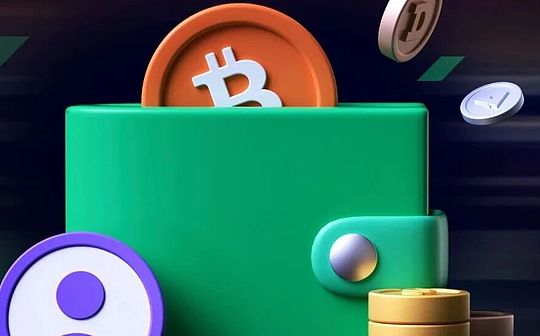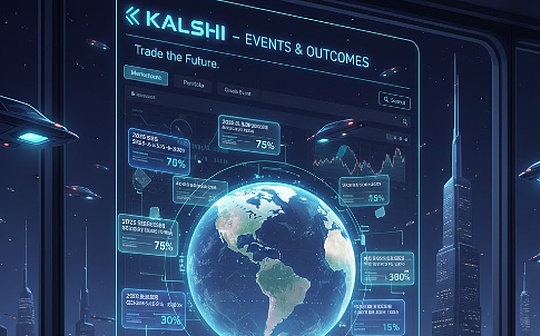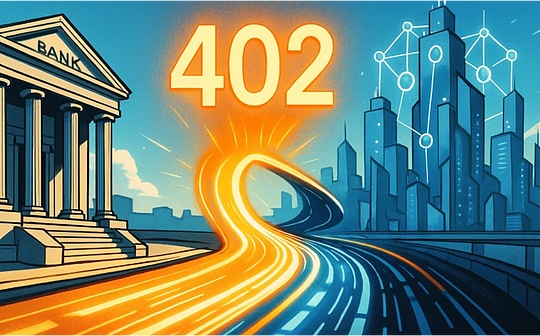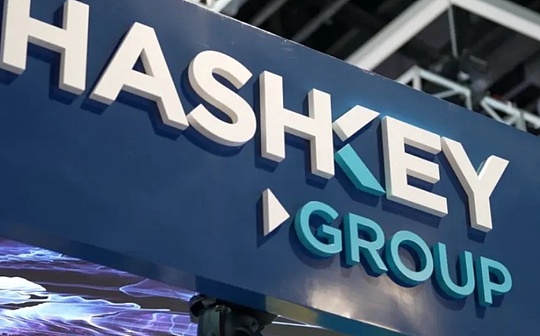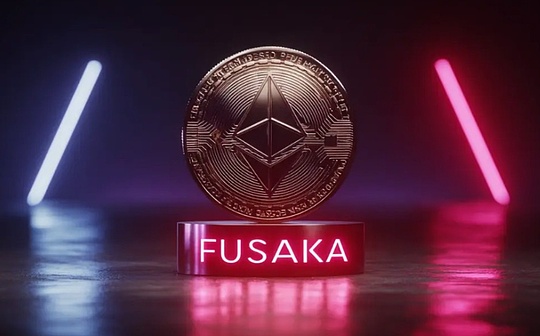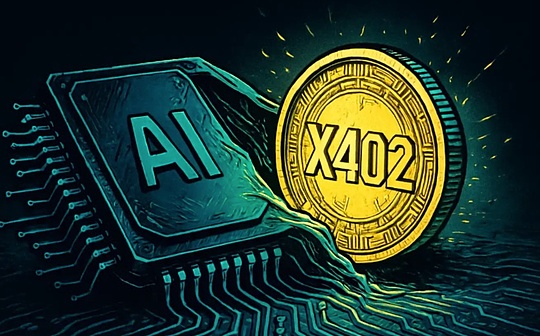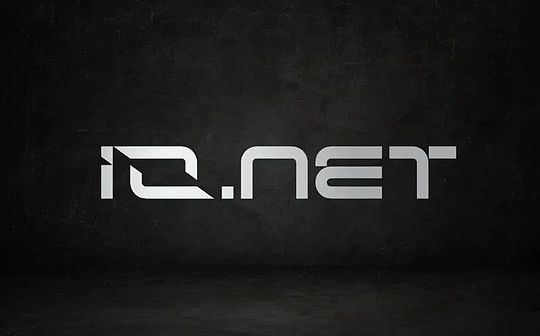
1. Project introduction
IO.NET is a distributed GPU system based on Solana, Render, Ray, and Filecoin, which aims to use distributed GPU resources to solve the computing challenges in the field of AI and machine learning.
>
IO.NET solves the problem of insufficient computing power resources by aggregating the unprecedented computing resources, such as independent data computing centers, cryptocurrency miners, Filecoin, and Render, so that engineers can easily access at a easily accessible access to a can easily access.Customized and low -cost systems obtain a lot of computing capabilities.
In addition, IO.NET introduced a distributed physical infrastructure network (DEPIN), combining resources from various providers, so that engineers can obtain a lot of computing power in a customized, effective and easy -to -implement manner.
IO Cloud now has more than 95,000 GPUs and more than 1,000 CPUs, supporting fast deployment, choosing hardware, geographical location, and providing transparent payment processes.
2. Core mechanism
2.1Centralized resource aggregation
IO.NET’s decentralized resource aggregation is one of its core functions. This function allows the platform to use GPU resources scattered globally to provide necessary calculation support for AI and machine learning tasks.The goal of this resource aggregation strategy is to optimize the use of resources, reduce costs, and provide wider visits.
>
The following is a detailed introduction:
2.1.1Superiority
-
Cost benefits: By using the unused GPU resources in the market, IO.NET can provide lower cost computing capabilities than traditional cloud services.This is particularly important for data -intensive AI applications, because they usually need a large amount of computing resources, and the traditional way may cost high.
-
Scalability and flexibility: The decentralized model allows IO.NET to easily expand its resource pool without relying on a single supplier or data center.This model provides users with the flexibility of choosing the most suitable resource for their task.
-
Resource source diversity: IO.NET aggregates GPU resources from multiple sources, including independent data centers, personal cryptocurrency miners, and excess resources participating in other crypto projects such as Filecoin and RENDER.
-
Technology implementation: The platform uses blockchain technology to track and manage these resources to ensure the transparency and fairness of resource distribution.Blockchain technology also helps automated payment and incentive allocation to users who contribute additional computing power to the network.
-
Resource discovery and registration: Resource providers (such as GPU owners) register their equipment on the IO.NET platform.The platform will verify the performance and reliability of these resources to ensure that they meet specific standards and needs.
-
Resource pooling: The verified resources are added to the global resource pool for platform users to rent.The distribution and management of resources automatically executed through smart contracts to ensure the transparency and efficiency of the processing process.
-
Dynamic resource allocation: When users initiate computing tasks, the platform dynamically allocates resources according to the needs of the task (such as computing power, memory, network bandwidth, etc.).The distribution of resources takes into account the cost efficiency and geographical location, and optimize the speed and cost of task execution.
-
Payment and fee: The leasing fee of the user uses $ IO to pay computing resources, including the GPU usage fee.In addition, $ IO is also used to pay various services and fees on the network.
-
Resource incentives: Publish $ IO token to users who provide GPU computing power or participate in the maintenance of the network as a reward to inspire them to continue to contribute resources.
-
Governance: $ IO token holders can participate in the governance decision of the IO.NET platform, including voting rights, affecting the future development direction and policy adjustment of the platform.
-
Stable value: The value of $ iOSD is linked to the US dollar 1: 1, providing users with a payment method to avoid fluctuations in the encrypted market.
-
Simple transaction: Users can use $ iOSD to pay platform fees, such as the cost of computing resources to ensure the stability and predictability of the transaction in value.
-
Cost coverage: Some network operations or transactions can be paid with $ iOSD, thereby simplifying the cost settlement process.
-
Resource provider incentives: Resource providers (such as GPU owners) can get the $ IO token as a return by contributing its equipment to the network.These token can be used to further purchase computing resources or trade in the market.
-
Expense payment: Users to use $ IO or $ iOSD to pay for computing resources.Choosing $ iOSD can avoid the risks caused by cryptocurrency fluctuations.
-
Economic activity incentives: Through the circulation and use of $ IO and $ iOSD, the IO.NET platform can stimulate economic activities and increase the liquidity and participation of the network.
-
Participate in governance: $ IO token also acts as governance token, so that the holder can participate in the governance process of the platform, such as proposal and voting decisions.
-
When the resource provider connects its GPU or other computing resources to the IO.NET platform, the system first identifies and classify these resources.This includes evaluating its performance indicators such as processing speed, memory capacity, and network bandwidth.
-
These resources were subsequently marked and archived in order to dynamically allocate according to the needs of different tasks.
-
When the user submits computing tasks to IO.NET, the needs of the task need to specify the task, such as the required computing power, memory size, budget limit, etc.
-
The scheduling system of the platform will analyze these needs and screen the matching resources from the resource pool.
-
Use advanced algorithms to automatically match the most suitable resource and submitted tasks.These algorithms take into account the performance, cost efficiency, geographical location (in order to reduce delay) and specific preferences of users.
-
The scheduling system will also monitor the real -time status of resources, such as availability and load, and dynamically adjust the allocation of resources.
-
All tasks are arranged into the queue according to the priority and submission time.The system handles the task queue according to the preset or dynamic adjustment of priority rules.
-
Emergency or high priority tasks can get fast response, while long -term or cost -sensitive tasks may be performed at low cost periods.
-
The dynamic resource allocation system includes a fault tolerance mechanism to ensure that the task can be smoothly migrated to other health resources even when some resources fail.
-
The load balancing technology ensures that no single resource is overloaded, and the performance of the entire network is optimized by reasonable allocation of tasks.
-
The system continues to monitor the execution status and resource operation of all tasks.This includes key performance indicators such as real -time analysis tasks and resource consumption.
-
Based on these data, the system may automatically adjust the allocation of resources to optimize the efficiency of task execution and resource utilization.
-
Transparent user interface: IO.NET provides an intuitive user interface. Users can easily submit tasks, view tasks status, adjust their needs or priority.
-
Feedback mechanism: Users can provide feedback on the results of the task execution, and the system adjusts the resource allocation strategy of future tasks based on feedback to better meet user needs.
-
Scalability and economics: The purpose of becoming the most cost -effective GPU cloud can reduce the cost of AI/ML projects by up to 90%.
-
Integration with IO SDK: Create a unified high -performance environment through seamless integration to enhance the performance of AI projects.
-
Global coverage: distributed GPU resources, optimizing machine learning services and reasoning, similar to CDN.
-
Ray framework supports: Use the RAY distributed computing framework for scalable Python application development.
-
Exclusive features: Provide private access rights for the OpenAI ChatGPT plug -in, which is convenient for deployment of training clusters.
-
Encrypted mining innovation: By supporting machine learning and artificial intelligence ecosystems, seeking innovation and Mining.
-
Staff homepage: Provide real -time monitoring of the dashboard of the connection device, which has the function of deleting and renamed equipment.
-
Equipment details page: Display comprehensive device analysis, including traffic, connection status and work history.
-
Income and reward pages: tracking income and work history, transaction details can be accessed on Solscan.
-
Add new device page: Simplify the device connection process and support fast and simple integration.
-
Homepage of the browser: provides insights on supply, verification of suppliers, active hardware, and real -time market pricing.
-
Cluster page: Show the public information of the clusters deployed in the network, as well as real -time indicators and reservation details.
-
Equipment page: Display public details connected to the network device, providing real -time data and trading tracking.
-
Real -time cluster monitoring: Provide instant insights on cluster status, health and performance to ensure that users get the latest information.
-
User interface: As a user’s visual front end, including public websites, client areas and GPU provider areas.Design intuitive and user -friendly.
-
Safety layer: ensure the integrity and security of the system, including network protection, user identity verification and activity records.
-
API layer: As a website, provider and internal management communication center, it promotes data exchange and operation.
-
Back -end layer: the core of the system, handling cluster/GPU management, customer interaction and automatic expansion operations.
-
Database layer: storage and management data, main storage for structural data, cache for temporary data.
-
Mission layer: Manage asynchronous communication and tasks to ensure the efficiency of execution and data flow.
-
Infrastructure layer: infrastructure, including GPU pool, arrangement tools and execution/ml tasks, equipped with strong monitoring solutions.
-
The use of reverse tunnel technology from the client to the secure connection from the client to the remote server enables engineers to bypass the firewall and NAT for remote access without complex configuration.
-
Working process: IO worker is connected to the middle server (IO.NET server).The IO.NET server listened to the connection between IO Worker and engineer machines to promote data exchange through reverse tunnels.
-
The engineer connected to IO Workers through the IO.NET server, simplifying remote access and management without the need for network configuration challenges.
-
Advantages:
-
Access convenience: Visit IO Workers directly to eliminate network obstacles.
-
Security: Ensure protected communication and maintain data privacy.
-
Scalability and flexibility: Effectively manage multiple IO workers in different environments.
-
IO Network uses a mesh VPN architecture to provide ultra -low delayed communication between AntMiner nodes.
-
Decentralization connectivity: Unlike traditional star models, the mesh VPN is directly connected to the node, which provides enhanced redundant, fault -tolerant capacity and load distribution.
-
Advantages: It has strong resistance to node failures, strong scalability, low delay, and better flow distribution.
-
Directly connect to reduce delay and optimize application performance.
-
There is no single -point failure, even if a single node fault network can still run.
-
By making data tracking and analysis more challenging and enhancing user privacy.
-
The addition of new nodes does not affect performance.
-
Resource sharing and treatment are more efficient between nodes.
-
The maximum supply of $ IO tokens is fixed at 800 million.The setting of this supply is designed to ensure the stability of the tokens and prevent inflation.
-
Initially, 300 million $ IO tokens will be issued.The remaining 500 million tokens will be distributed to suppliers and their shareholders as rewards. This process is expected to last 20 years.
-
The reward was released as an hour and followed a decreasing model (starting from 8%in the first year, a monthly decrease of 1.02%, and about 12%per year), until the upper limit of the total circulation of 800 million pieces.
-
The $ IO uses a programmatic tokens destruction system, that is, to purchase and destroy the $ IO token with the income generated by IO.NET from the IOG network.The destruction mechanism will adjust the number of destruction according to the price of $ IO to generate the pressure of the token.
-
IO.NET charges multiple fees to users and suppliers, including reservation and payment fees when booking computing power.The setting of these costs is to maintain the financial health of the Internet and support the market circulation of $ IO.
-
For those who use USDC, 2%of the fees are charged; for those who use $ IO, no fee is charged.
-
Similar to users, suppliers also need to pay the corresponding fees when receiving payment, including booking and payment.
-
GPU renters (also known as users), such as machine learning engineers who want to buy GPU computing power on the IOG network.These engineers can use $ IO to deploy GPU clusters, cloud game examples, and build an illusory engine 5 (and similar) pixel flow applications.Users also include individual consumers who want to make server -free reasoning on BC8.AI and hundreds of applications and models Io.NET will host in the future.
-
GPU owners (also known as suppliers), such as independent data centers, encrypted mines, and professional miners, hoping to provide unused GPU computing capabilities on the IOG network and profit from it.
-
IO currency holders (also known as communities) participate in providing encrypted economic security and incentive measures to coordinate mutually beneficial and punishment among parties to promote the development and adoption of the network.
-
Community: 50%of the total distribution. This token is mainly used to reward community members and encourage the participation and growth of the platform.
-
R & D and ecosystems (R & AMP; D ECOSYSTEM): 16%of them are used to support the platform’s R & D activities and ecosystem construction, including partners and third -party developers.
-
The initial core contributor (Initial Core Contributors): 11.3%, reward team members who have made key contributions at the early stage of the platform.
-
Early investors: Early Backers: SEED: 12.5%, this part of the token is allocated to early seed investors to reward their trust and funding support for the initial period of the project.
-
Early investors: Early Backers: Series A: It accounts for 10.2%to be assigned to round A investors to return their funds and resource investment in the earlier stage of the project.
-
From 2024 to 2025: In the past two years, 6,000,000 $ IO tokens released each year.
-
From 2026 to 2027: Starting from 2026, the annual release volume has fallen by half to 3,000,000 $ IO tokens.
-
From 2028 to 2029: The amount of release continues to be halved and releases 1,500,000 $ IO tokens each year.
-
GOLEM: It is also a decentralized computing network that users can rent or rent unused computing resources.Golem is committed to creating a global super computer.
-
Render: Use decentralized networks to provide graphic rendering services.Through blockchain technology, Render enables content creators to access more GPU resources, thereby accelerating the rendering process.
-
IEXEC RLC: This project creates a decentralized market that allows users to rent their computing resources.IEXEC supports various types of applications through blockchain technology, including data -intensive applications and machine learning workloads.
-
Scalability: IO.NET specifically designed a highly scalable platform to meet the customer’s bandwidth needs, and enables the team to easily expand the workload on the GPU network without large -scale adjustment.
-
Batch reasoning and model service: The platform supports parallelized reasoning on data batch, allowing machine learning teams to deploy workflows on distributed GPU networks.
-
Parallel training: In order to overcome memory restrictions and sequential workflows, IO.NET uses a distributed computing library on multiple devices in parallel training tasks.
-
Parallel super parameter adjustment: Utilizing the inherent parallelity of the hyperparameter adjustment experiment, IO.NET optimizes the scheduling and search mode.
-
Strengthening Learning (RL): Using open source enhanced learning library, IO.NET supports highly distributed RL workloads and provides simple APIs.
-
Instant accessability: Unlike the long -term deployment of traditional cloud services, IO.NET Cloud provides instant access to GPU supply, and users can start their projects within a few seconds.
-
Cost efficiency: IO.NET is designed as an affordable platform, suitable for different types of users.At present, the platform’s cost efficiency is about 90%higher than competition services, providing significant savings for machine learning projects.
-
High security and reliability: The platform promises to provide first -class security, reliability and technical support to ensure the safety and stable environment of machine learning tasks.
-
The convenience of implementation: IO.NET Cloud eliminates the complexity of constructing and managing infrastructure, enabling any developer or organization to seamlessly develop and expand AI applications.
-
Challenge: Although decentralized calculation provides significant cost and efficiency advantages, the complexity of its technology may constitute a large entry barrier to non -technical users.Users need to understand how to operate a distributed network and how to effectively use distributed resources.
-
Impact: This may limit the extensive adoption of the platform, especially in the user groups that are not familiar with blockchain and distributed computing.
-
Challenge: Although the blockchain provides enhanced security and transparency, the openness of decentralized networks may make it more vulnerable to the threat of network attacks and data leakage.
-
Impact: This requires IO.NET to continuously strengthen its security measures to ensure the confidentiality and integrity of user data and computing tasks. This is the key to maintaining user trust and platform reputation.
-
Challenge: Although IO.NET strives to pass decentralized resources to provide efficient computing services, coordination between different geographical locations and hardware resources of different quality may bring performance and reliability challenges.
-
Impact: Any performance due to non -matching hardware or network delay may affect customer satisfaction and the overall effect of the platform.
-
Challenge: Although IO.NET has designed a highly scalable network, it is still a huge technical challenge to effectively manage and expand scattered resources in the world.
-
Impact: This requires continuous technological innovation and management improvement to maintain the stability and response speed of the network in the face of rapid growth users and computing needs.
-
Challenge: IO.NET is not in the market in the blockchain and decentralization computing market.Other platforms such as Golem, Render, and IEXEC are also providing similar services, and the rapid changes in the market may quickly change the competitive situation.
-
Impact: In order to maintain competitiveness, IO.NT needs to continuously innovate and improve the uniqueness and value of its services to attract and maintain users.
2.1.2Working principle
2.1.3Specific steps
2.2Double token Economic System
IO.NET’s dual -deck economic system is one of its core features of its blockchain network. It is designed to motivate network participants and ensure the efficiency and sustainability of the platform operation.This system includes two token: $ IO and $ iOSD, each token plays a unique role.The structure and functions of this economic system are introduced in detail below.
2.2.1$ IO token
$ IO is the main functional token of the IO.NET platform, which is used for multiple network transactions and operations.Its main purpose includes:
2.2.2$ Iosd token
$ Iosd is a stable currency linked to the US dollar, which aims to provide a stable value storage and trading medium for the IO.NET platform.The main function is as follows:
2.2.3The working mechanism of the dual token system
IO.NET’s dual token system interacts with the following methods to support network operations and growth:
2.3Dynamic resource allocation and dispatch
IO.NET’s dynamic resource allocation and scheduling is one of the core functions of the platform. The key is to efficiently manage and optimize the use of computing resources to meet the diverse calculation needs of users.This system ensures that computing tasks can be implemented in the most suitable resource through intelligent and automated ways, while maximizing the utilization and performance of resources.
>
Here are all aspects of this mechanism in detail:
2.3.1Dynamic resource allocation mechanism
1. Resource recognition and classification:
2. Demand matching:
3. Intelligent scheduling algorithm:
2.3.2Scheduling and execution
1. Mission queue and priority management:
2. Fault tolerance and load balancing:
3. Monitoring and adjustment:
2.3.3User interaction and feedback
3. System structure
3.1IO Cloud
>
IO Cloud is designed to simplify the deployment and management of the decentralized GPU cluster. It provides scalable and flexible GPU resource access for machine learning engineers and developers, without major hardware investment.This platform provides an experience similar to traditional cloud services, but has the advantages of decentralized networks.
Highlights:
3.2IO worker
>
IO Worker aims to simplify and optimize the supply operation for WebAPP users.This includes user account management, real -time event monitoring, temperature and power tracking, installation support, wallet management, security and profitability analysis.
Highlights:
3.3IO Explorer
>
IO Explorer is designed as a comprehensive platform that provides users with in -depth insights for IO.NET network operations, similar to the blockchain browser to provide transparency for blockchain transactions.Its main goal is to monitor, analyze and understand the detailed information of the GPU cloud, ensure the complete visibility of network activities, statistical data and transactions, while protecting the privacy of sensitive information.
advantage:
3.4IO-SDK
IO-SDK is the basic technology of IO.NET, which is derived from a branch of RAY technology.It enables the task to run parallel and handle different languages. It is compatible with the main machine learning (ML) framework, making IO.NET appear flexible and efficient for various computing needs.This setting, plus a clear definition technology to ensure that IO.NET Portal can meet today’s needs and meet future changes.
>
Application of multi -layer architecture
3.5IO Tunnels
>
>
Application in IO.NET
3.6Io network
>
Net -shaped VPN network:
The benefits of IO.NET:
4. $ IO tokens
>
4.1$ IO token basic framework
1. Fixed supply:
2. Distribution and incentive:
3. Destruction mechanism:
4.2Expenses and income
>
Use fee:
Payment fee:
Supplier fee:
4.3Ecosystem
4.4Specific allocation
>
4.5Halving mechanism
>
5. Team/cooperation/financing status
>
IO.NET has the leadership team of diversified skills and experience. They have decades of experience in the technology field and contribute to the company’s success.
Tory Green is the chief operating officer of IO.NET, and was previously the chief operating officer of Hum Capital, the development and strategic director of the Fox Mobile Group enterprise.
Ahmad Shadid is the founder and CEO of IO.NET, and was previously engineer of Whalestrader quantitative system.
Garrison Yang is the chief strategic officer and chief marketing officer of IO.NET. It was previously the vice president of AVA LABS growth and strategic.He graduated from the University of California Santa Barbara’s environmental health engineering.
>
In March of this year, IO.NET received a round A financing of $ 30 million. The round of financing was led by Hack VC. ghash, sevenx, ARKSTREAM, Animoca Brands, Continue Capital, MH Ventures and OKX, as well as the Yat SIU, including Mo Shaikh and Avery Chings, the founders of the founder of Solana, the founders of Sorana, the founders of the APTOS, the Avery Chings, Animoca Brands, and Perlon. Industry leaders, including Jin Kang’s Jin Kang, participated in the investment.
6. Project evaluation
6.1Track analysis
IO.NET is a decentralized computing network based on the Solanda blockchain. It focuses on providing strong computing capabilities by integrating unused GPU resources.This project is mainly in the following track areas:
1. Decentralized Computing
IO.NET builds a decentralized physical infrastructure network (DEPIN), using GPU resources from different sources (such as independent data centers and encrypted miners).This decentralized method is designed to optimize the use of computing resources, reduce costs, and improve accessability and flexibility.
2. Cloud Computing
Although IO.NET uses decentralized methods, the services it provides similar to traditional cloud computing, such as GPU cluster management and machine learning tasks.The goal of IO.NET is to create an experience similar to traditional cloud services, but use the advantages of decentralized networks to provide more efficient and low -cost solutions.
3. BlockChain Applications
As a blockchain -based project, IO.NET uses the characteristics of the blockchain, such as security and transparency to manage resources and transactions in the network.
Projects similar to IO.NET on functions and goals include:
6.2Project advantage
6.3Project challenge
1. Technical complexity and user adoption
2. Network security and data privacy
3. Performance and reliability
4. Scalability of scale
5. Competition and market acceptance
7. Conclusion
All in all, IO.NET set new benchmarks in the field of modern cloud computing with its innovative decentralized computing network and blockchain -based architecture.By aggregating GPU resources that are not fully utilized globally, IO.NET provides unprecedented computing capabilities, flexibility and cost efficiency for machine learning and artificial intelligence applications.This platform not only makes the deployment of large -scale machine learning projects faster and economical, but also provides strong security and scalable solutions for various users.
Facing the challenges such as technical complexity, network security, performance stability, and market competition, if IO.NET can overcome challenges and cultivate a dynamic ecosystem, it may fundamentally reshape our visit and use in the web3 era in the web3 eraCalculating power method.However, like any emerging technology, it is important to be aware that its long -term success will depend on the ability to continue to develop, adopt and control the development of infrastructure -based infrastructure.
>

